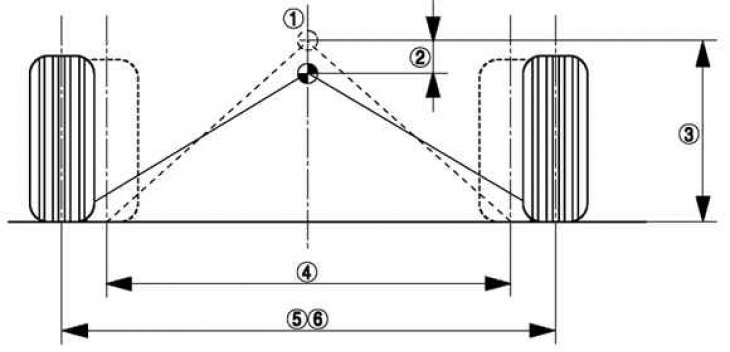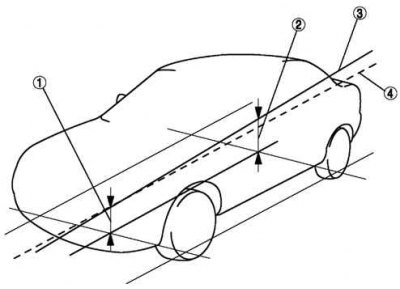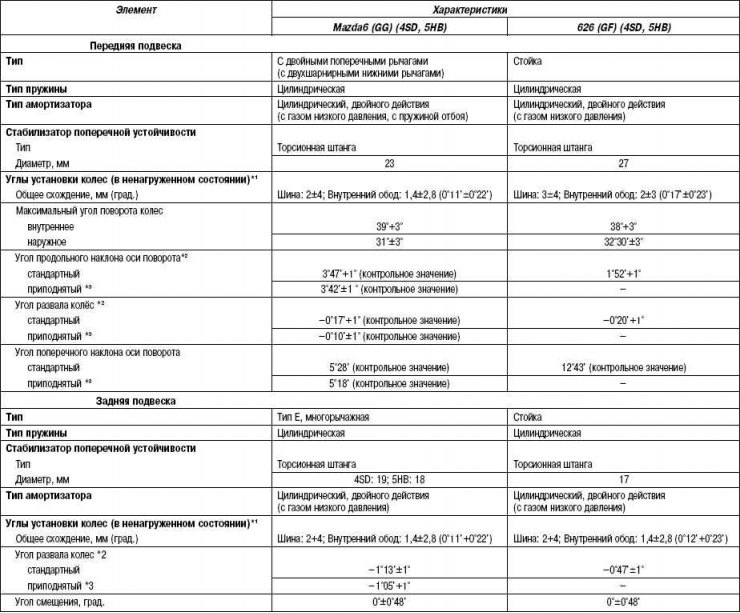The front suspension is double wishbone, the lower arm is equipped with two floating joints.
Rear suspension - multi-link type E.
The shift of the kingpin relative to the center of the front suspension wheel has been minimized. The front upper arm and both lower arms are equipped with low friction ball joints. The track width has been increased by 50 mm compared to the predecessor model. This is equivalent to lowering the center of gravity of the car by 20 mm. As a result, cornering stability is improved.

Pic. 4.1. Car platform features: 1 - center of gravity; 2 - reduced by 20 mm; 3 - height; 4 - track width (626); 5 - track width (Mazda 6); 6 - increased by +50 mm
The axis of rotation is set slightly oblique. The front shock absorber is equipped with a rebound spring. A separate support is used for the shock absorber. to increase the rigidity of the structure, a front cross member and an amplifier for adjusting the camber of the rear wheels are installed. Tie rod and lower arm have special cam and turnbuckle (pic. 4.1).

Pic. 4.2. Vehicle roll center height setting: 1 - height of the front roll center; 2 - height of the rear roll center; 3 - axis of rotation; 4 - continuation of the line (parallel to the base) from the height of the front roll center
The geometry of the platform allows you to place the yaw axis (an invisible vertical axis about which the vehicle responds to driver input) in the center of the vehicle. The height of the forward roll center is less than the rear roll center. Straight-line control is improved by setting the axis of rotation at a slight angle (pic. 4.2).
Table 4.1. Specifications of the front and rear suspensions

*1 Engine coolant and engine oil are at the specified level. The fuel tank is full. The spare wheel, jack and tools are in their original places.
*2 The difference between the left and right wheels should not exceed 1°30'.
*3 The distance between the center of the wheel and the edge of the wing is as follows:
- before - 402 mm.
- rear - 392 mm.
